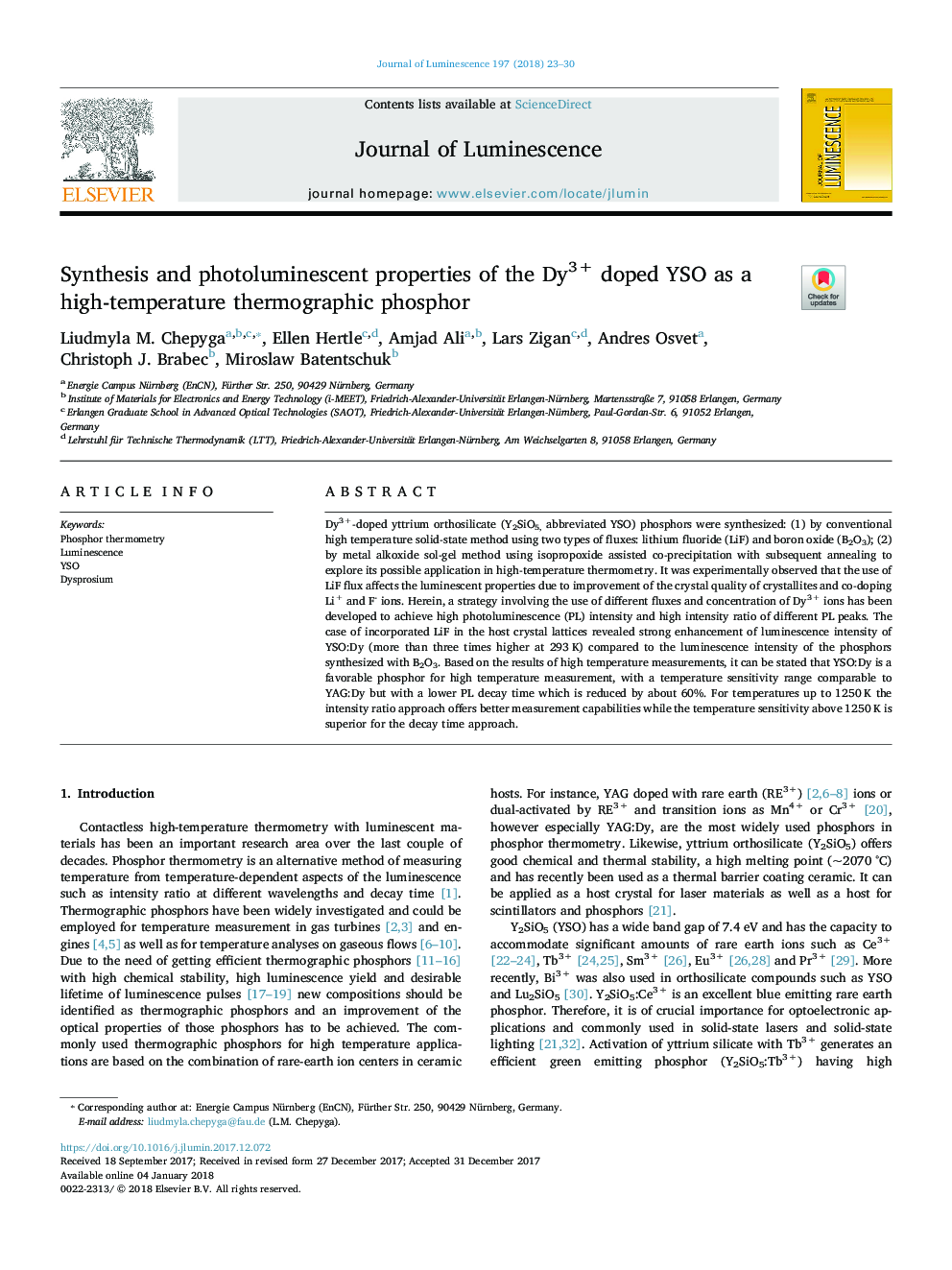| Article ID | Journal | Published Year | Pages | File Type |
|---|---|---|---|---|
| 7840112 | Journal of Luminescence | 2018 | 8 Pages |
Abstract
Dy3+-doped yttrium orthosilicate (Y2SiO5, abbreviated YSO) phosphors were synthesized: (1) by conventional high temperature solid-state method using two types of fluxes: lithium fluoride (LiF) and boron oxide (B2O3); (2) by metal alkoxide sol-gel method using isopropoxide assisted co-precipitation with subsequent annealing to explore its possible application in high-temperature thermometry. It was experimentally observed that the use of LiF flux affects the luminescent properties due to improvement of the crystal quality of crystallites and co-doping Li+ and F- ions. Herein, a strategy involving the use of different fluxes and concentration of Dy3+ ions has been developed to achieve high photoluminescence (PL) intensity and high intensity ratio of different PL peaks. The case of incorporated LiF in the host crystal lattices revealed strong enhancement of luminescence intensity of YSO:Dy (more than three times higher at 293Â K) compared to the luminescence intensity of the phosphors synthesized with B2O3. Based on the results of high temperature measurements, it can be stated that YSO:Dy is a favorable phosphor for high temperature measurement, with a temperature sensitivity range comparable to YAG:Dy but with a lower PL decay time which is reduced by about 60%. For temperatures up to 1250Â K the intensity ratio approach offers better measurement capabilities while the temperature sensitivity above 1250Â K is superior for the decay time approach.
Related Topics
Physical Sciences and Engineering
Chemistry
Physical and Theoretical Chemistry
Authors
Liudmyla M. Chepyga, Ellen Hertle, Amjad Ali, Lars Zigan, Andres Osvet, Christoph J. Brabec, Miroslaw Batentschuk,
